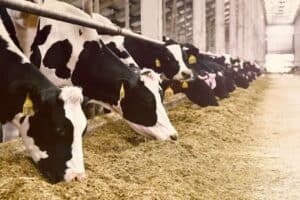What is taking place is a unionist paradigm shift, as economic realities start to overwhelm ideological shibboleths.

Conservative commentators and radical workers are in rare agreement. Both believe the SAA strike was a great success. When push came to shove, government blinked. Again.
Predictably, they differ in their interpretations of what this means. The workers think that they have assured the future of the carrier and that their style of militant, brinkmanship unionism has been vindicated.
The conservatives think that it signals a crippling defeat of President Cyril Ramaphosa’s government and the imminent closure of the airline or, alternatively, a financial crisis that will imminently see all the state-owned entities tumble like dominoes, one after the other.
They are both right. And both wrong. As I’ve written, ad nauseam, it is vital that government curbs the bloated and rampant public sector unions.
That’s difficult when the enemy is within — part of your ANC’s alliance with the Congress of South African Trade Unions (Cosatu) and the SA Communist Party (SACP).
After a four-day strike and an additional R400m in lost revenue, SAA settled. But contrary to popular opinion on both the right and left, this was, at best, a pyrrhic victory.
The workers get their 8%. Maybe. Wages will increase by SAA’s initially proposed 5.9% to start in February 2020 and will be backdated to April this year, with the back pay phased in.
This back pay, however, is “subject to the availability of funding”.
The extra 2.1% conceded as a result of the strike will only be paid if and when a task team of management and workers manage to find the necessary cost savings.
It gets worse. The mooted retrenchment of workers will be deferred merely to January. Thereafter, cuts will take place unless the task team manages magically to conjure sufficient cost savings.
Previously, SAA workers and Cosatu had flatly rejected any job cuts.
Now, the SAA unions are claiming, as a victory, a four-to-six month “training layoff scheme”.
What is taking place is a unionist paradigm shift, as economic realities start to overwhelm ideological shibboleths. Cosatu has historically been adamant that no privatisation would be tolerated. Ever.
This week, Cosatu did a dramatic about-face.
Its spokesperson, Sizwe Pamla, told City Press that at this coming weekend’s meeting of the tripartite alliance, Cosatu would propose that although state-owned entities (SOEs) should remain state owned, moves should also be made to identify those that could benefit from “partial privatisation”.
It will be interesting to see how the SACP, which considers itself to be the brains trust of the tripartite alliance, will respond to this unexpected phenomenon of independent thinking by Cosatu.
So, an ANC government has stood up to Cosatu, with promising results.
However, the problem for Ramaphosa is that the state of SOE finances is such that there isn’t time for this kind of long campaign of attrition against union privilege.
It needed a quick, definitive victory at SAA and it failed to achieve that.
This week, passengers and travel groups started deserting SAA in anticipation of a collapse. That might be the final nail in the SAA coffin.
For more news your way, download The Citizen’s app for iOS and Android.






